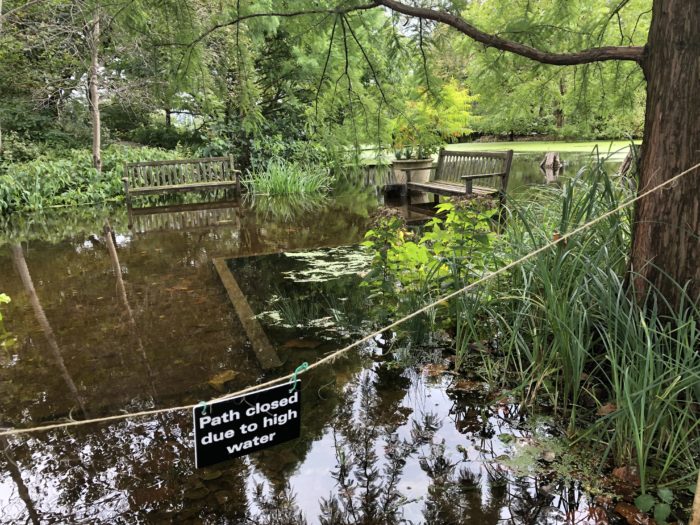
The National Climate Assessment reported in 2014 that storms have been dumping more and more rain, with some parts of the United States experiencing a 70% increase in the amount of rain falling during heavy storms. In southwestern Wisconsin, one August storm in 2018 dropped more than 15 inches of rain overnight, smashing our state’s previous 24-hour rainfall record of 11 inches.
Since the summer of 2018, there has been above-average rainfall and winter precipitation across the Upper Midwest specifically. It has been a soggy year and a half, and the situation is expected to persist, with the National Oceanic and Atmospheric Administration predicting 40% above-average precipitation this winter. Snow and ice bring their own challenges, but now is also a good time to brainstorm ways to make your garden more resilient to heavy rain and flooding in the upcoming year. There are ways we can help our gardens sail through the rain so they can shine in the sun.
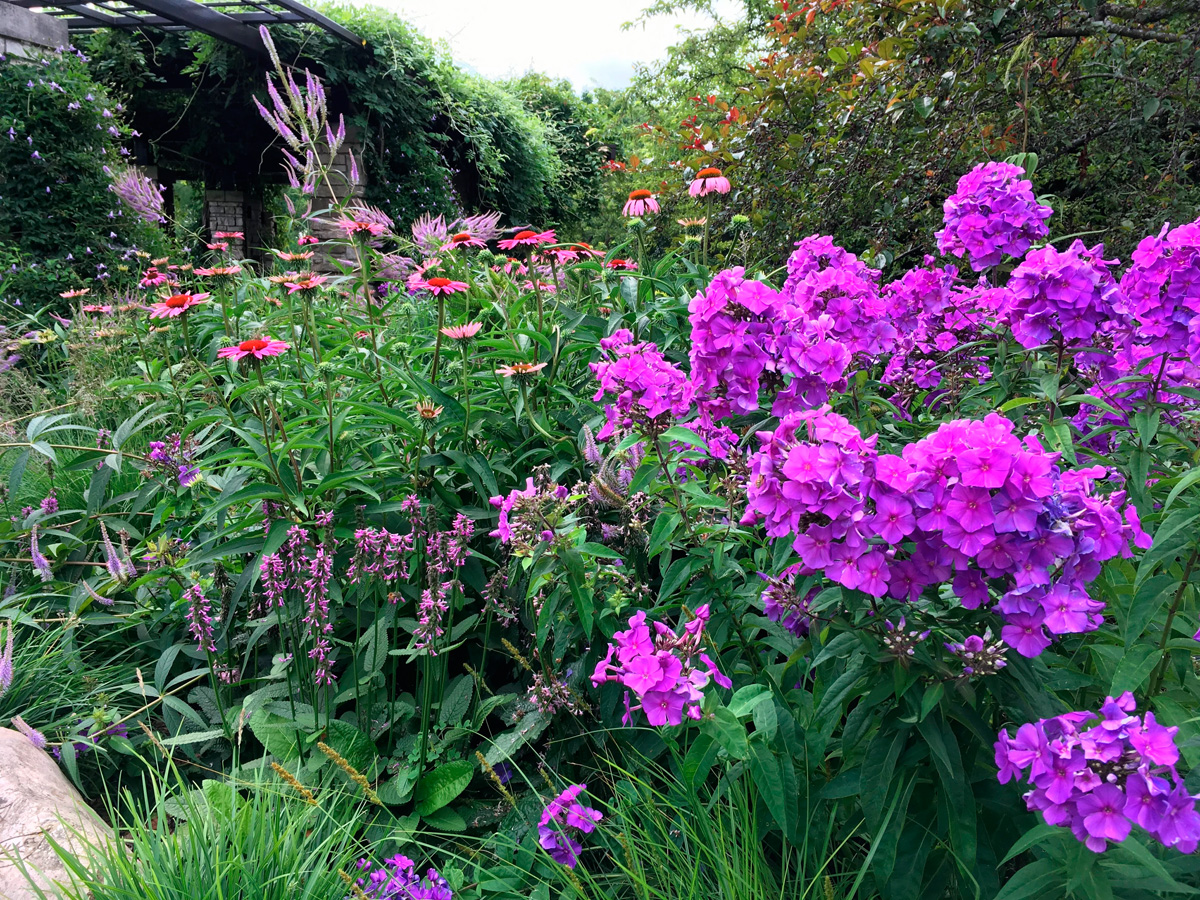
Plants growing close together help to prevent erosion. Erosion caused by heavy rain washes precious garden soil out of our yards and into local watersheds. Within your garden, the first step you can take to prevent erosion is to cover bare soil. Mulching your garden with shredded hardwood bark works well, but the best way to protect garden soil is with a network of plants planted closely together. Their close canopy of leaves above ground break up rainfall, and the system of roots knitting soil particles together below keep it in place. The Know Maintenance Perennial Garden by Midwestern sustainable gardening expert Roy Diblik is a great introduction to the techniques and benefits of designing gardens with plant communities in mind.
Rainfall rushing off your home’s roof is a major contributor to runoff and erosion. Properly maintain your gutters, and consider working with a landscaper to evaluate grading issues on your property. A good landscaper can also help with the installation of a rain garden, capturing water on-site so your garden has time to absorb and benefit from excess moisture. Your municipality’s conservation or engineering department probably offers resources for water management as well. Here in Madison, Wisconsin, the city even offers direct help with digging and planting rain gardens in the terrace between street and sidewalk.
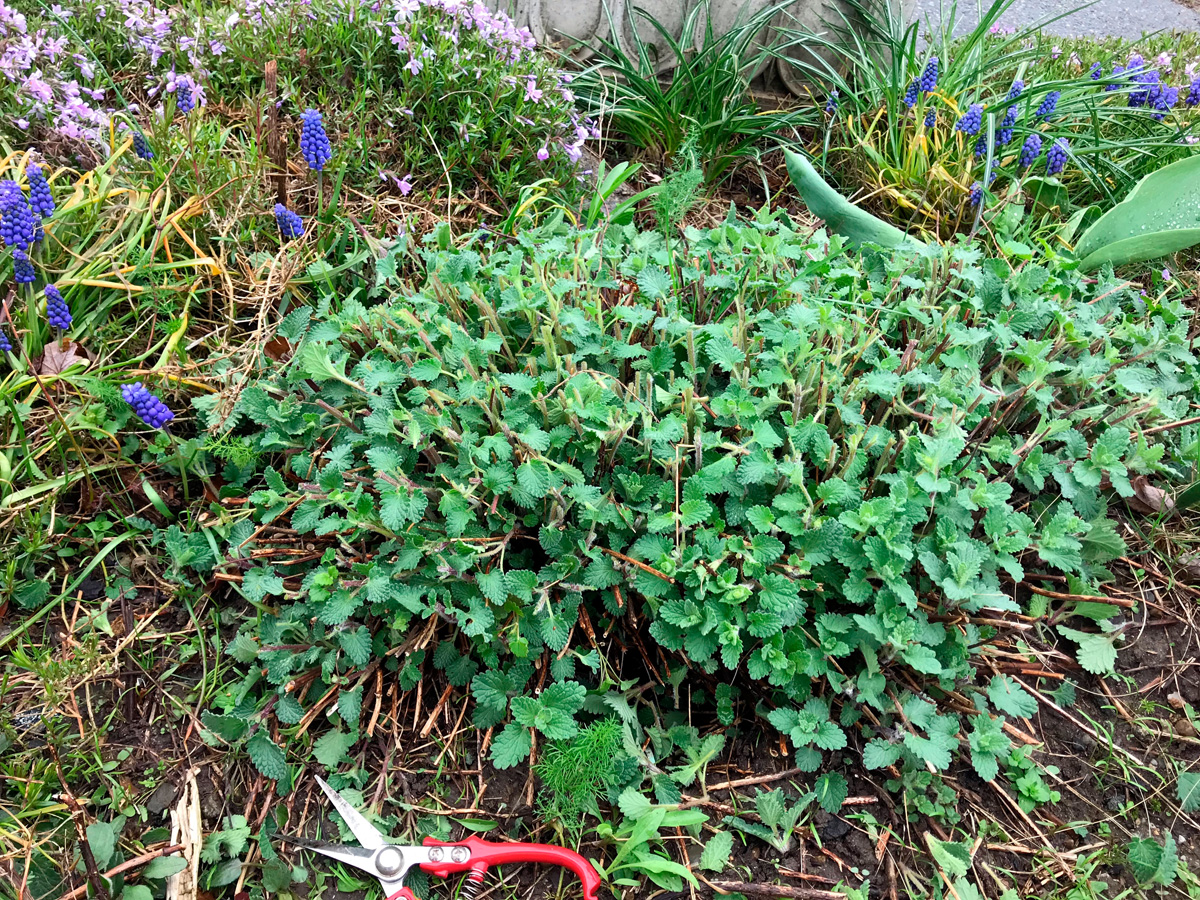
On the scale of individual plants, flopping from heavy rain can be lessened by cutting taller perennials back by a third in late May. This technique, often called the Chelsea Chop, promotes the growth of branching points and overall sturdier plants. This technique works well on bee balm (Monarda spp. and cvs., Zones 3–9), garden phlox (Phlox paniculata and cvs., Zones 4–8), asters (Symphyotrichum, Eurybia, and Aster spp. and cvs., Zones 3–8), and other late bloomers in the daisy family, such as ox-eye daisies (Heliopsis spp. and cvs., Zones 3–9) and sunflowers (Helianthus spp. and cvs., Zones 4–9).

High humidity also contributes to hard-to-control plant diseases like powdery and downy mildew. Selecting plant varieties bred for disease resistance is key. Richard Hawke’s notes from comparative trials of ornamental plants at Chicago Botanic Garden provide great information about disease resistance, and All-American Selections winners are a good place to start looking for resistant vegetable varieties.
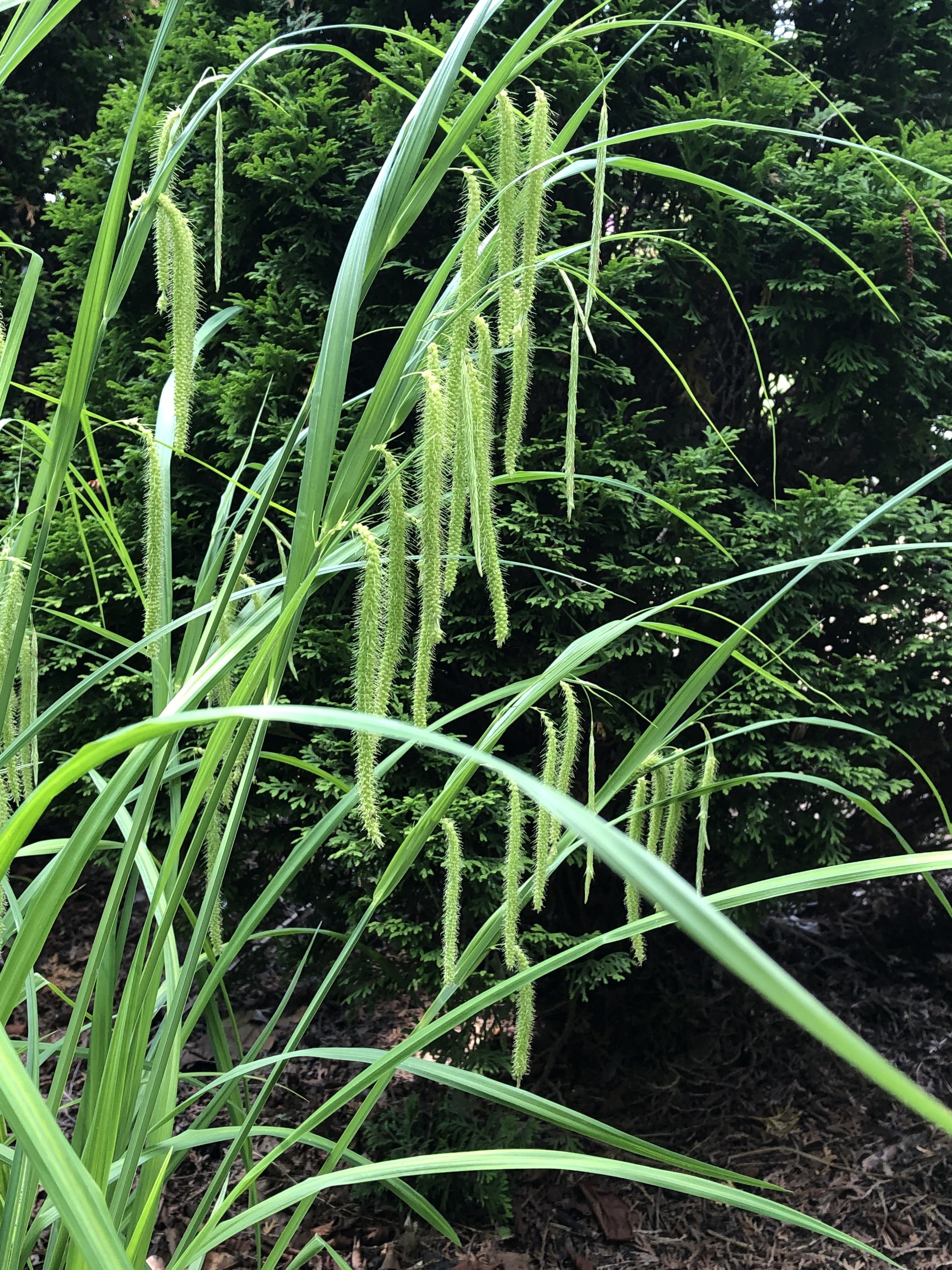
A more difficult issue to address on a gardening scale is flooding and the effects of standing water. Above-average rainfall and melting of a heavy winter snowpack have created ongoing flood conditions throughout the Midwest, with recent conditions rivaling the devastation of the Great Flood of 1993. Traditional Kentucky bluegrass lawns (Poa pratensis, Zones 3–7) are especially vulnerable to damage from standing water. If water pools in your lawn, consider converting target areas to rain gardens or other moisture tolerant plantings. Many sedges (Carex spp. and cvs., Zones 3–10) have a grassy look but tolerate more moisture. Clustered field sedge (Carex praegracilis, Zones 4–8) and fringed sedge (Carex crinite, Zones 3–8) tolerate both wetness and drought and can be mowed in a fashion similar to turf.
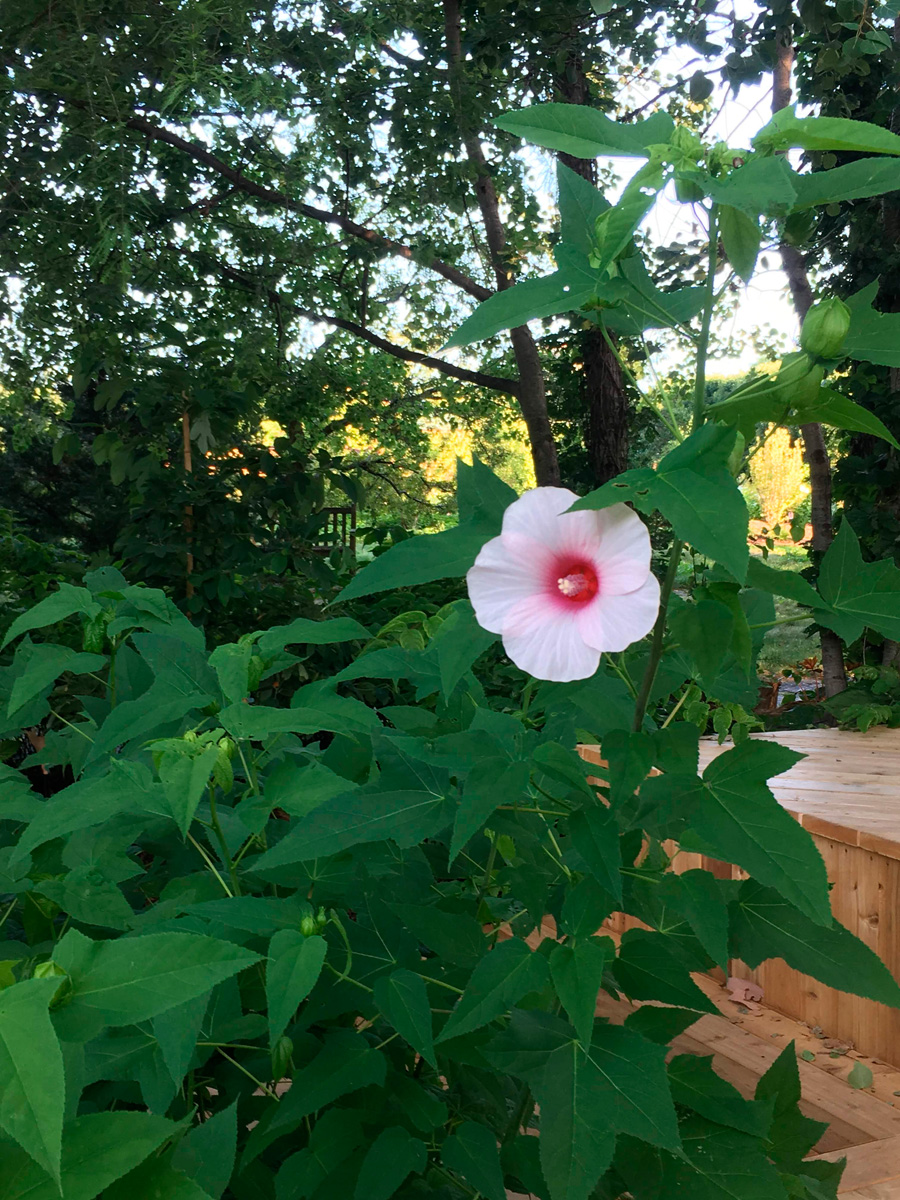
Selecting plants for areas that can be flooded for weeks at a time can be tough, with few plants tolerating both intermittent dryness and standing water. Here at Olbrich Botanical Gardens in Madison, a few perennials that have survived standing water over a long period include sweet flag (Acorus calamus, Zones 4–10), fringed sedge (Carex crinita, Zones 3–8), Joe Pye weed (Eutrochium and Eupatorium spp. and cvs., Zones 4–9), crimson-eyed rose mallow (Hibiscus moscheutos, Zones 5–8) and white turtlehead (Chelone glabra, Zones 3–8). We’ve also been happy to see native shrubs such as buttonbush (Cephalanthus occidentalis, Zones 5–9), winterberry holly (Ilex verticillata, Zones 3–9), and spicebush (Lindera benzoin, Zones 4–9) thriving after periods of inundation.
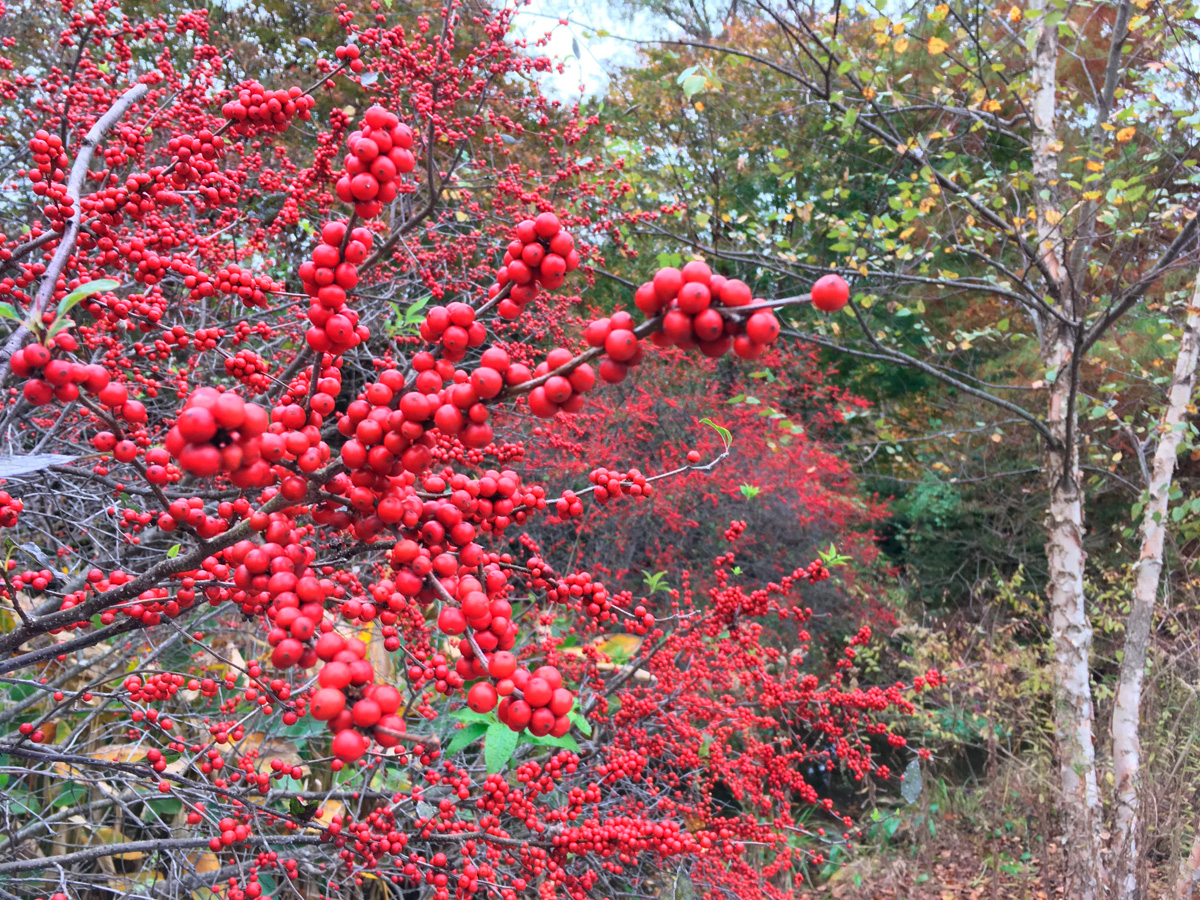
Excessive rainfall and flooding are conditions that we can expect to see more of during times of global climate change, but like all gardening obstacles, with appropriate attention to cultural conditions, plant selection, and maintenance techniques, we can create gardens that continue to thrive.
—Erin Presley is a horticulturist at Olbrich Botanical Gardens in Madison, Wisconsin.



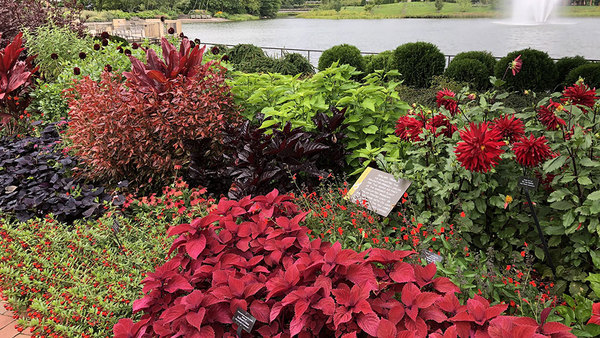
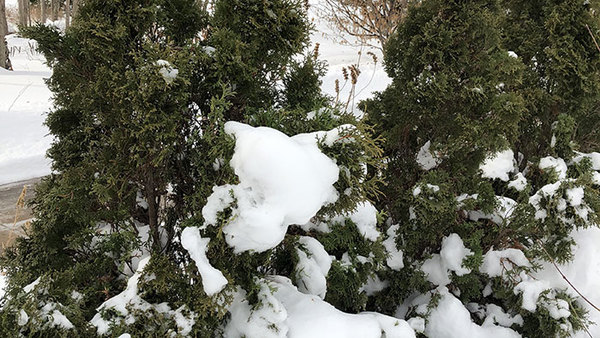













Comments
Great advice. Could you write an article on gardening with one hand? Dislocated elbow while gardening. Had just started weeding for the 3rd time.
Log in or create an account to post a comment.
Sign up Log in